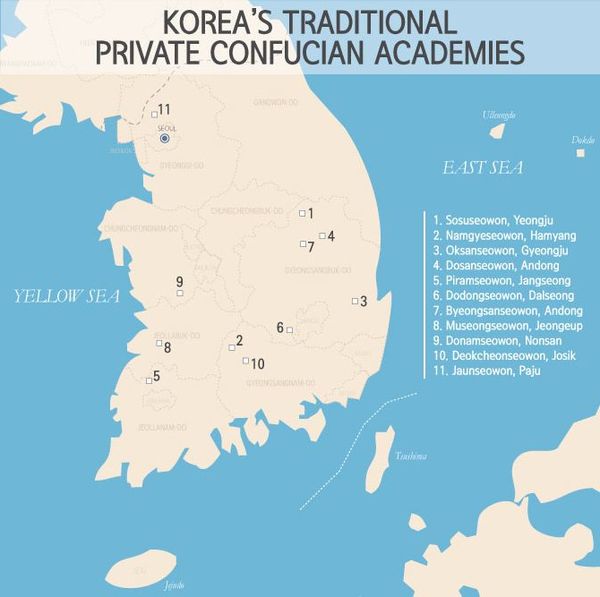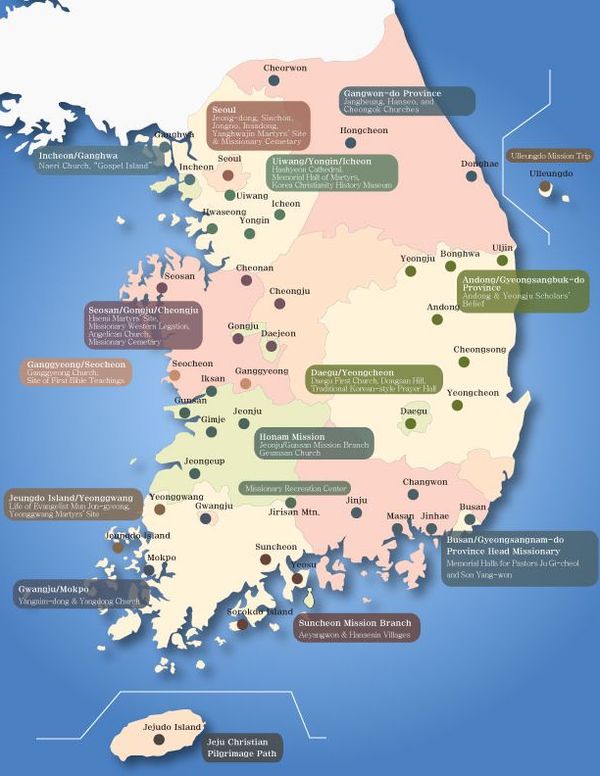"The Geography of Korea"의 두 판 사이의 차이
Korea100
| 2번째 줄: | 2번째 줄: | ||
|Article=한국의 지리 | |Article=한국의 지리 | ||
}} | }} | ||
| + | |||
| + | Korea (both North and South) is located between 33 and 40 degrees latitude and 124 and 132 degrees longitude. Korea's neighbors include China and Japan. South Korea's area is 100,295 kilometers squared and its capital is Seoul. South Korea has approximately 50 million people and Koreans speak their own language, Korean. The country has a temperate climate and experiences four distinct seasons. Winter is cold and dry, while summer is very hot and humid. In spring and autumn, there are many clear and dry days. Mountainous areas comprise 70 percent of the territory. Due to Korea's geographic location within East Asia, it has played an important role in cultural exchange throughout history. | ||
=='''Korea's Confucian Academies'''== | =='''Korea's Confucian Academies'''== | ||
2017년 12월 26일 (화) 12:53 판
Korea (both North and South) is located between 33 and 40 degrees latitude and 124 and 132 degrees longitude. Korea's neighbors include China and Japan. South Korea's area is 100,295 kilometers squared and its capital is Seoul. South Korea has approximately 50 million people and Koreans speak their own language, Korean. The country has a temperate climate and experiences four distinct seasons. Winter is cold and dry, while summer is very hot and humid. In spring and autumn, there are many clear and dry days. Mountainous areas comprise 70 percent of the territory. Due to Korea's geographic location within East Asia, it has played an important role in cultural exchange throughout history.



